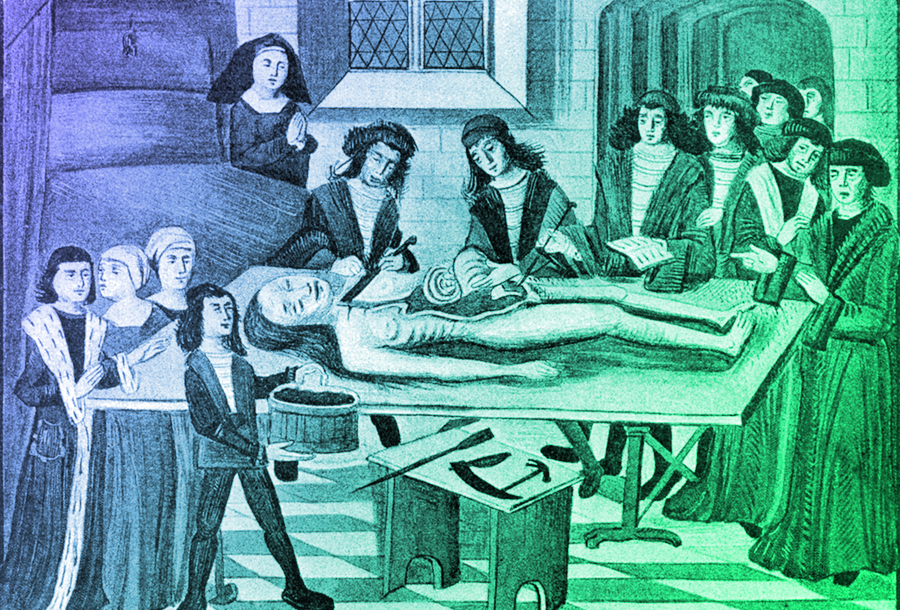Meet ten men and women who had a lasting impact on medicine in the medieval world
Subscribe to All About History now for amazing savings!

Paul of Aegina
BYZANTINE c.625-690
Paul was one of the most prominent physicians of the Byzantine period. He studied medicine in Alexandria, Egypt and was also exposed to Arabic medicine through his travels to the Middle East.
He wrote The Epitome of Medicine, comprising of seven books on various subjects including hygiene and toxicology, combining the work of Hippocrates and Galen with new medical procedures, such as cauterisation. It was highly influential and remained as the standard guide for medicine and surgery for 800 years.

Al-Zahrawi
Spanish 936-1013
Widely hailed as ‘the father of modern surgery’, Al-Zahrawi was the greatest surgeon of the Islamic Golden Age. In roughly the year 1000, he completed his 30-volume illustrated medical encyclopaedia Al-Tasrif, which was intended for medical students. Documenting Al-Zahrawi’s almost 50 years of medical experience, it discussed human anatomy and the pathology of diseases among other topics. It was influential on the development of both Islamic and European medicine and surgery, remaining as the standard textbook in medical universities for 500 years. Aside from his encyclopaedia, Al-Zahrawi holds the distinction of introducing around 200 new surgical instruments to the medieval world.
Anna Komnene
Byzantine 1083-1153
Byzantine princess Anna Komnene studied medicine from an early age, eventually developing a reputation as a good physician. Her father, Emperor Alexios I, placed Komnene in charge of a large hospital, as well as an orphanage, in the capital Constantinople. While in this role, it is believed that she treated thousands of patients and she was also known to teach medicine in various other hospitals. Interestingly, Komnene was deemed to be an expert in gout and treated personally treated her father when he suffered attacks.

Avicenna
Persian 980-1037
Regularly cited as one of the most significant physicians of the Islamic Golden Age, Avicenna wrote hundreds of works, many of which were dedicated to medicine. His most famous was the encyclopaedia The Canon O Medicine, which remained in use until the 17th century as one of the world’s most authoritative and famous medical textbooks. Avicenna was influenced by the work of Greek physician Galen, combined with Persian and Indian medicines. Although the majority of it has now been debunked by modern medical science, Avicenna provided great insight to areas such as anatomy and symptoms, and is often touted as a founder of preventive medicine.
Ibn Zuhr
Spanish 1094-1162
Ibn Zuhr was considered the most renowned physician of Muslim Spain. Born into a family of physicians, he trained in medicine from an early age and was introduced to the works of Hippocrates and Galen by his father, who made him swear the Hippocratic oath. He notably wrote the Kitab al-Taysi, focusing on clinical descriptions and diagnosis of diseases, at the request of his contemporary Averroes, to serve as a companion the latter’s medical encyclopaedia, Colliget. Also known for introducing animal testing to evaluate new medical procedures, Ibn Zurh’s work contributed greatly to the development of surgery in the medieval world.

Hildegard von Bingen
German 1098-1179
Hildegard was a Benedictine nun who was known for her holistic approach healing and herbal remedies. She was the author of the nine volume Physcia and the five volume Causae et Curae, which between them covered a range of topics including human physiology, the medicinal properties of plants and herbal treatments. While it remains unknown exactly where Hildegard studied medicine, her writing suggests that she was familiar with folk medicine, Arabic medicine and the work of Galen.

Maimonides
Spanish c.1135-1204
First exposed to medicine while living in Morocco from 1160 to 1165, Maimonides’s reputation as a physician earned him a place as the court physician to the sultan of Egypt, Saladin. Influenced by Greek and Arabic medicine, coupled with his own experiences, Maimonides wrote at least ten medical treatises, discussing conditions such as asthma and pneumonia. His work is credited with spreading medical knowledge amongst the Jewish community during the Middle Ages.
Ibn al-Nafis
Syrian 1213-1288
Ibn al-Nafis made one of the biggest medical discoveries of the Medieval world when he correctly described pulmonary circulation, with blood moving from the right side to the left side of the heart through the lungs. This contradicted the traditionally accepted view of Galen, where blood seeped from the right to the left ventricle through the chamber walls – it would take European scholars another three centuries to prove Ibn al-Nafis correct. He also predicted the existence of coronary and capillary circulations, 400 years before they were discovered, proving that he was a physician far ahead of his own time.

Averroes
Spanish 1126-1198
Averroes, a physician at the royal Almohad court, was celebrated for his insight and knowledge in the field of medicine. He created a number of medical works, the most important of which was his first, the encyclopaedia Book of Generalities About Medicine, which he wrote in 1162. Also known by its Latin name, Colliget, it was split into seven books which discussed a range of topics, including anatomy, hygiene and therapy. The Colliget was focused on the theoretical bases of medicine and summarised the work of Galen, earning Averroes recognition in the Latin medical world.

Guy de Chauliac
French c.1300-1368
After studying medicine in Montpellier, Paris and Bologna, Chauliac practiced as a physician in Lyon and served as the personal surgeon to three Popes of the Avignon Papacy.
He wrote the Chirurgia Magna, in which he discussed a variety of medical treatments and surgical procedures, largely influenced by the work of Galen. The Chirurgia Magna quickly became one of the most important surgical textbooks in the Medieval world and remained as such for almost 400 years.
Originally published in All About History 71
Subscribe to All About History now for amazing savings!

